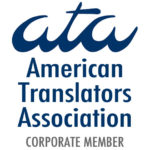With an ever-growing number of businesses looking to cash in on the growth of the Hispanic market in the U.S., English-language trademarks have become increasingly susceptible to infringement by companies looking to take marketing shortcuts.
So, what exactly constitutes trademark infringement? To qualify as infringement, the translation into Spanish must be determined to be direct and literal. In addition, it is difficult to prove copyright infringement in cases where the English-language trademark consists merely of a service or product description (e.g. jeans branded with the name “Rugged Pants”).
In order to protect your business’ English-language trademark, first hire a professional translator to produce one or more possible Spanish translations of your copyrighted name. The following steps may then be taken to avoid trademark infringement:
1) Hand over the translations to a trademark-watching firm, which will warn your company of any potentially conflicting trademarks.
2) Set up a Google Alert to receive notifications about a specific word or phrase to sniff out companies that may be using your trademarked name online.
3) Monitor new trademark registration application filings at http://www.USPTO.gov.
4) Ask Spanish-speaking colleagues with a finger on the pulse of the Hispanic community to remain vigilant.
Read more about this issue at the Richmond Times-Dispatch website.



